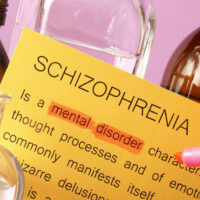
Symptoms, Types, and Misconceptions about Schizophrenia
The concept of healthy living is often associated with eating right and following a proper lifestyle. Earlier, the term “wellness” was used to denote one’s physical well-being only, but this term has now come to include one’s mental health as well. One’s mental health is as important as their physical health. It is imperative to understand that mental disorders exist and people dealing with these conditions need all the help and support they can get. Instead of abiding by the age-old taboos associated with mental disorders, it is essential to recognize that people can coexist with others despite such conditions, given the help of loved ones and appropriate treatment methods. One such disorder that has been subjected to constant misunderstandings and has been thoroughly misrepresented by the media is schizophrenia. This disorder affects around 1% of the population and is a chronic condition. Schizophrenia tends to affect men and women alike, irrespective of their age. Men tend to develop the symptoms in their late teens or 20s, whereas, women show signs of this condition in their late 20s and early 30s. To be able to help people with this condition, it is crucial to understand its effect on people and differentiate between the facts and misconceptions about schizophrenia.
Read More 







